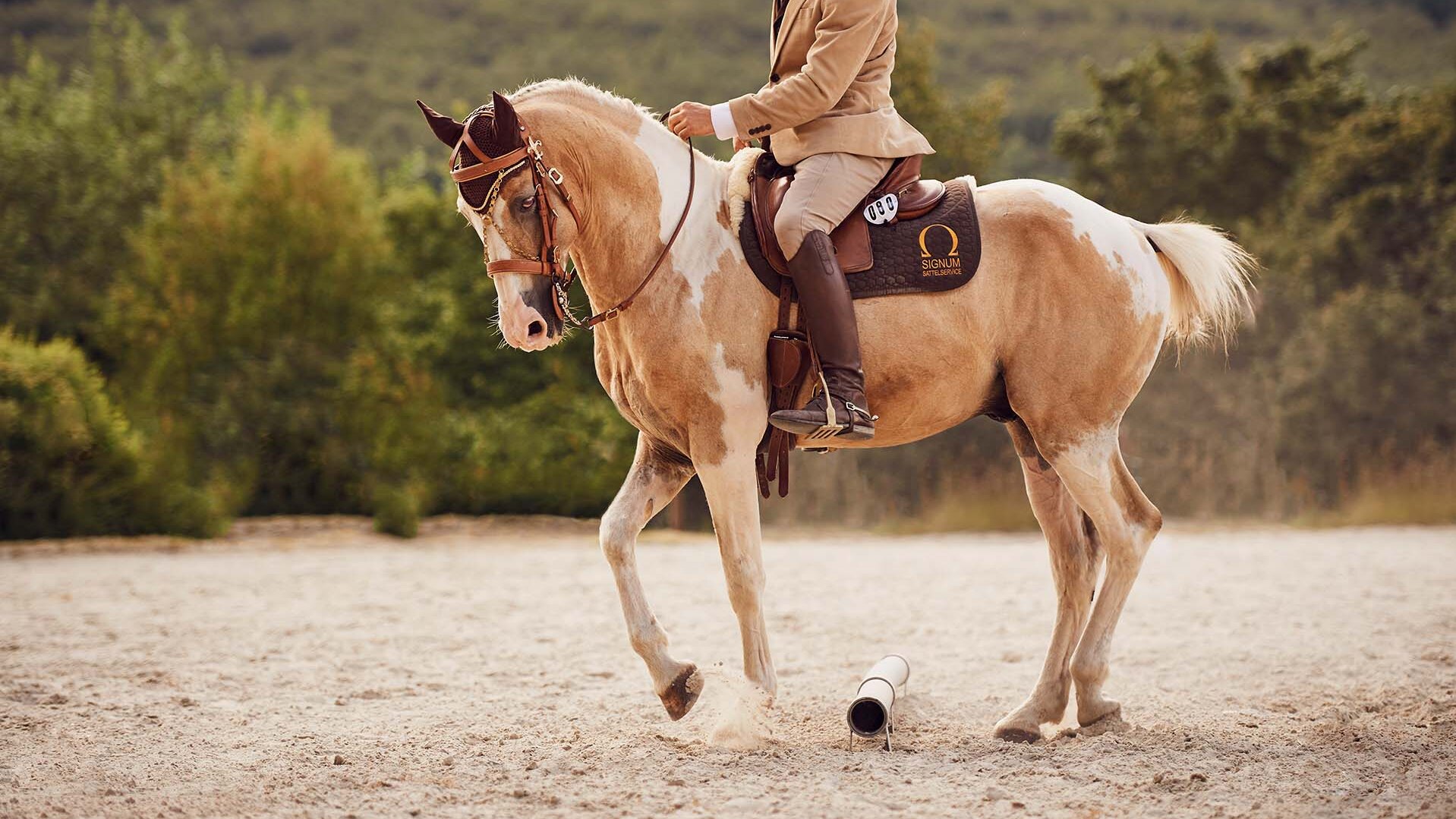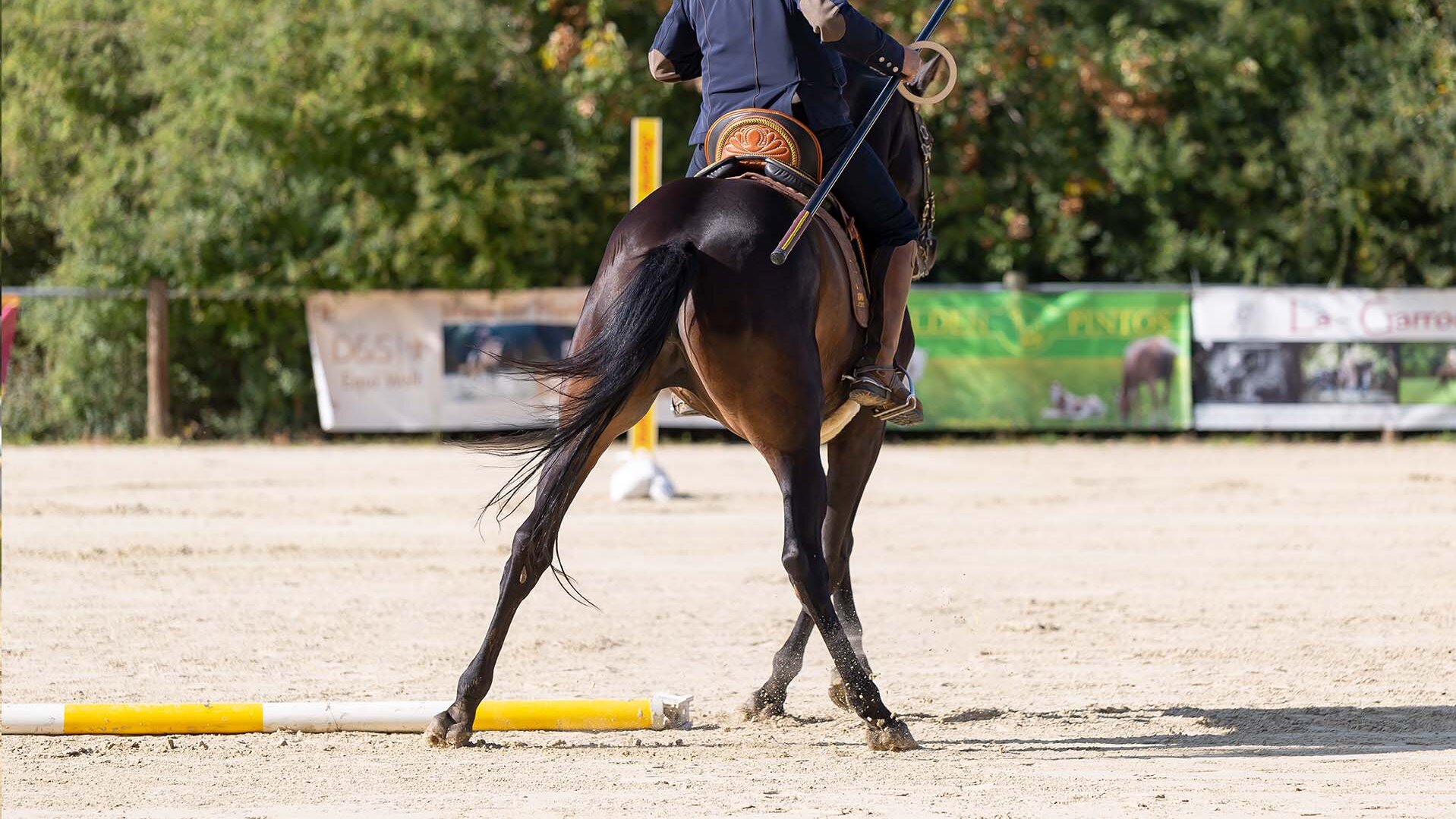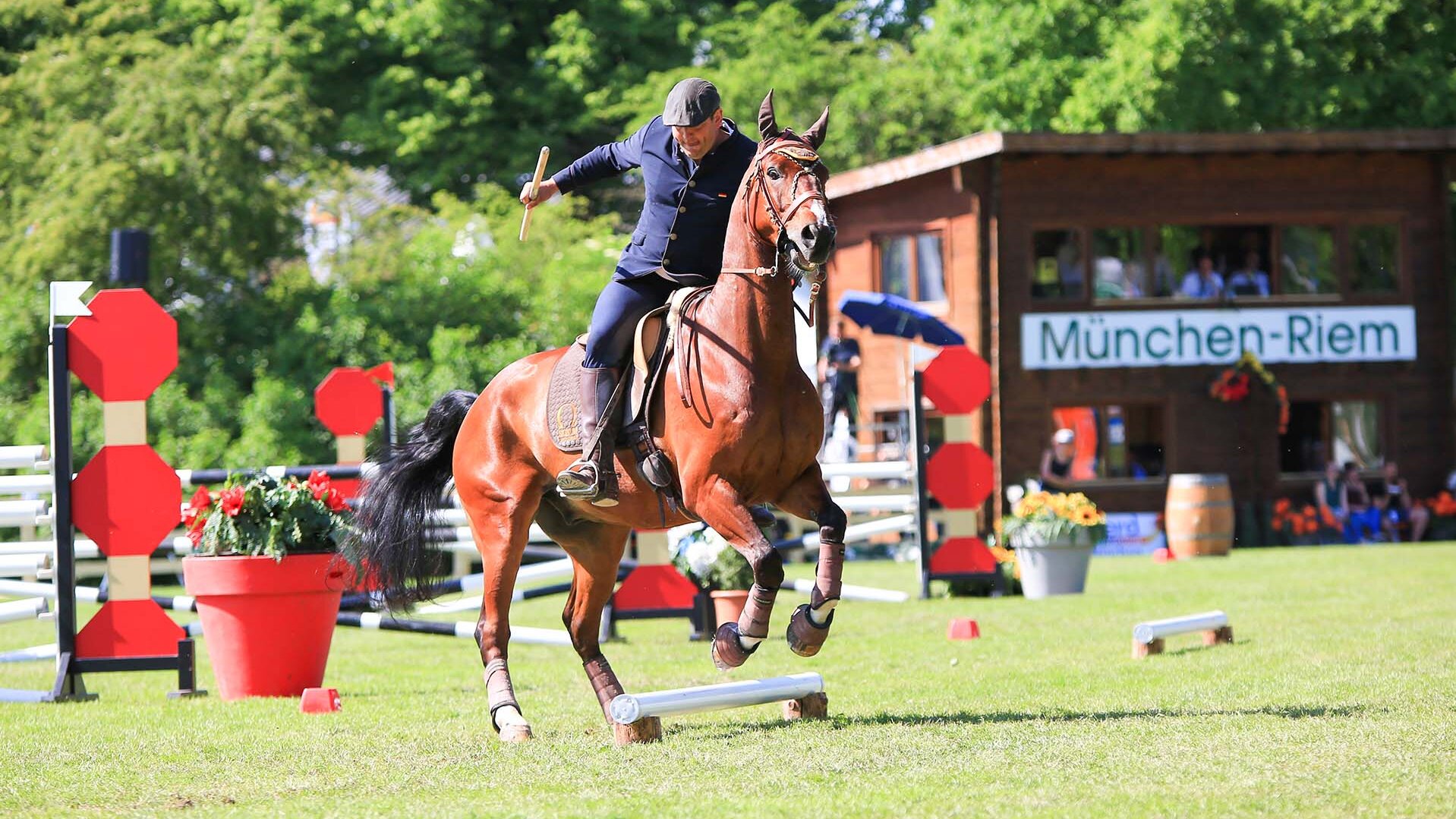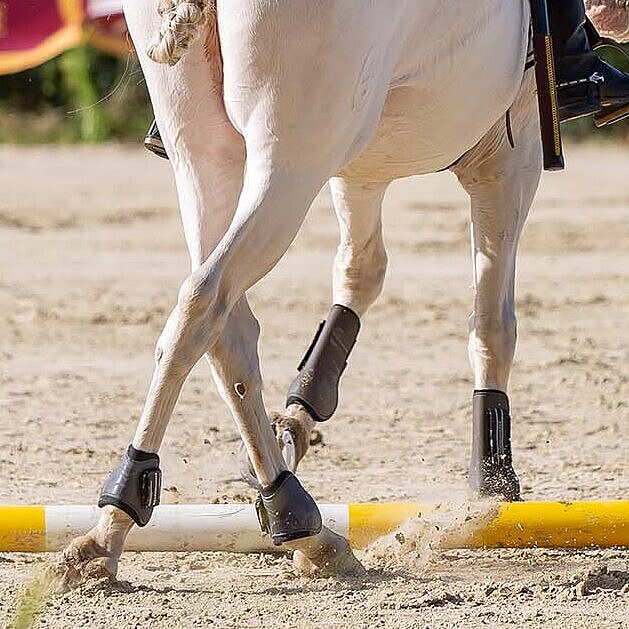The Working Equitation Trail obstacle travers bar

The trail obstacle "sideways over a pole" tests another elementary direction of movement in the working riding style - sideways. The cattle herder needs a willing and well-trained partner who can move flexibly in all directions when working the cattle in the field.
The traverse bar in theory
In this first theory section, Gernot Weber shows you what the idea behind this trail obstacle is and gives you training ideas and tips. Just watch and ride - in line with our motto: Working Equitation - the new fun in riding.
The traverse bar in practice
Gernot Weber and Jenny from blindly follow horses show you in this second practical part what the idea of this trail obstacle is and how you can start with your horse at this obstacle. Just watch and ride it!
Level of difficulty
The "sideways over pole" trail obstacle is available in different variations. What all variations have in common is that horse and rider have to move sideways over the pole and the pole is placed in the centre under the horse. The pole lies between the horse's forehand and hindquarters at all times and must not be touched when moving sideways.

In the simple version, there is only one pole that must be crossed in one direction. An increased level of difficulty is created by two poles that are set up parallel to each other and the horse and rider have to show lateral movement in two directions. Another tricky variation is two poles set up in the shape of an "L". Here, every step must fit precisely.
The traverse bar in Trail style
In the style trail, riders in the lower classes are allowed to cross the poles at a walk with leg yields. In the higher classes, a trotting position is required at the walk. The crossing of the feet should be clearly recognisable during the sideways stride and the movement should be fluid and even.
The traverse bar in the speed trail

The aim of the speed trail is to overcome this obstacle as quickly as possible without making any mistakes. The rider is free to choose the gait and position. He can also cross the pole sideways at a canter as long as it remains centred under the horse along its entire length and the front and hind legs can keep their track. The same applies here - mistakes are expensive and dropping the pole costs 5 penalty seconds.

